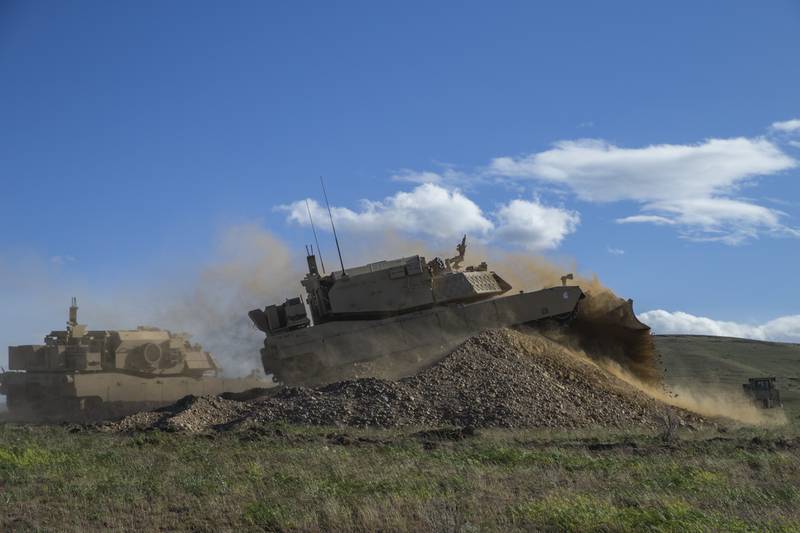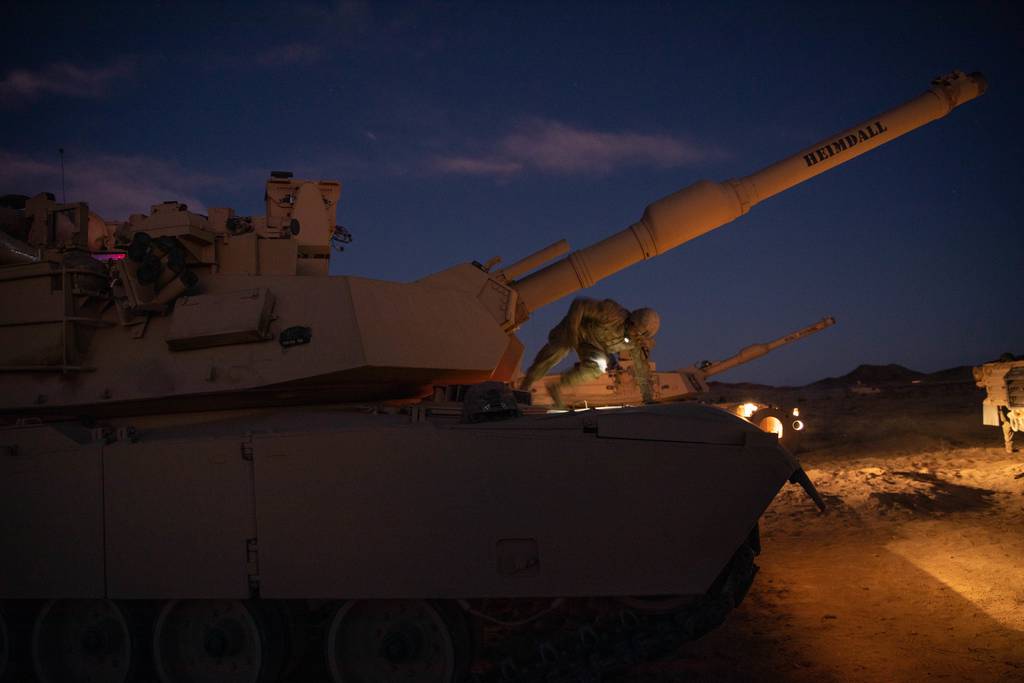McLEAN, Va. — A U.S. Army office tasked with improving battlefield connectivity is now tinkering with a combination of armored vehicles and advanced communications gear, as the service prepares for larger, more-dispersed fights with heftier formations and ordnance.
The Program Executive Office for Command, Control and Communications-Tactical, or PEO C3T, has in recent months increasingly focused on what is known as Capability Set 25, an expected assemblage of commercial, off-the-shelf technologies and specialized military equipment, all with the Army division, a footprint of 15,000 soldiers and firepower, in mind.
“The day of the Army building its own capabilities only, and deploying them, are gone. It will always be a mix of commercial and military-unique capabilities, and that’s what’s going to make us effective,†Lt. Gen. John Morrison, the service’s top uniformed information-technology official, said last month at the Army IT Day conference, hosted by the Northern Virginia chapter of the communications- and electronics-focused group AFCEA.
“And all of us must be in,†he added, “because, quite frankly, our adversaries are all-in.â€
RELATED

The Army is taking a stepwise approach to improving soldier communications and its own larger networks, the invisible threads that tie together assets on the front lines and back home. The increments are known as capability sets, which, like Apple’s iPhone, build upon the development and distribution cycles of one another.
The venture kicked off in fiscal 2021, with special attention paid to infantry and pragmatic networking tools. Additional batches of tech upgrades are expected in 2023, 2025, 2027 and in the years beyond.
The armor challenge
PEO C3T dispatched an expert team to Project Convergence, the Army’s contribution to the Pentagon’s connect-everything campaign, Joint All-Domain Command and Control, late last year to explore the intersection of modernized radios and armor, including the prized Abrams tank.
The cohort worked closely with the Program Executive Office for Ground Combat Systems, or PEO GCS, whose portfolio includes the main battle tank, the Stryker fleet and the Bradley infantry fighting vehicle.
“Col. Shermoan Daiyaan and the team went down with some of the integrated tactical network,†PEO C3T boss Maj. Gen. Anthony Potts said at the IT Day conference, “and we did some preliminary prototyping onto some of their armored vehicles, onto some of the tanks.â€
The experimentation at Project Convergence, which featured other services as well as foreign forces, including from Australia and the U.K., will inform how Capability Set 25 proceeds.
Other trials and pilots, namely in early 2022, at Fort Stewart, Georgia, were designed to better understand the needs of interconnected armored formations, which rumble across the landscape and often can’t afford to stop, but run the risk of disconnecting.
An Army leader previously told C4ISRNET challenges exist simply because of the diversity and needs of the armored fleet; it is, said then-Brig. Gen. Jasper Jeffers, deputy commanding general of maneuver for the 3rd Infantry Division, “massively different in size, scope and the actual physics.†Armor represents some of the Army’s most space-constrained platforms. Working new kit into them can be technically daunting, let alone time consuming.

“That is a long process for us to get through,†Potts said. An inquiry made to PEO GCS on Jan. 24 went unanswered.
A preliminary review of Capability Set 25 is expected in the coming months, in the spring. A critical design review, which will examine technological maturity and cost effectiveness and could crack open the door for procurement, will eventually follow.
Capability Set 23, a predecessor tailored to Strykers, passed its critical review in April and was sent to Europe for additional, live-fire testing. Previously identified issues associated with legacy Strykers and newer communications gear have been solved, the Army said.
Step by step
Network modernization is a top priority for the Army as it shifts to multidomain operations — the ability to deter and defeat an enemy, with help from others, in any location — and wrestles with the challenge of upscaled conflicts and communications environments jeopardized by adversaries such as China and Russia.
Both powers are capable of jumbling, intercepting and shutting down U.S. chatter. And any fight against them, against China in the Indo-Pacific or against Russia in Europe, will require the conquering of massive distances and other geographic hurdles.
“Like all things, we change,†Potts said. “We change, we adapt, based on what our adversaries are doing, based on the environment around us.â€
RELATED

Capability Set 25 is the first batch to inherently focus on the division, a formation capable of sustained fighting and upkeep. Previous capability sets were tied to the brigade, roughly 5,000 soldiers. Such smaller setups were the U.S. military’s mainstay for the war on terror, a global sweep pitched by a previous president as excising “a radical network of terrorists and every government that supports them.â€
Things have since changed, with a renewed era of great power competition pushing the spotlight away from the Middle East and militant groups with inferior or outdated equipment.
“For many, many years now, we’ve been in a brigade-centric Army,†Potts said. “As I’m sure everybody in this room is aware, we are now going back to the division as the unit of action.â€
Colin Demarest was a reporter at C4ISRNET, where he covered military networks, cyber and IT. Colin had previously covered the Department of Energy and its National Nuclear Security Administration — namely Cold War cleanup and nuclear weapons development — for a daily newspaper in South Carolina. Colin is also an award-winning photographer.








